Madrid was eliminated in the first round of vote (though tied with Istanbul and needed the vote for tie-breaker).
Istanbul was eliminated in the final vote. The vote tally, according to Asahi, was 60 to 36.
I'm more curious to know why Madrid and Istanbul lost, rather than why Tokyo won.
The UK's Telegraph commented the choice was about "least bad". Some may disagree and ask if that was the case why Madrid was eliminated in the initial round (the country didn't suffer a nuclear accident, and it is far away from Syria).
Move on to the next vote, this time in the US Congress on Syria, which may come as soon as Monday.
Saturday, September 7, 2013
(OT) 2020 Summer Olympic Goes to TOKYO, by 60 to 36 Final Vote (UPDATED)
Friday, September 6, 2013
(OT) Obama Manages to Get 10 Nations at G20 to Support US Attack on Syria
They are: Australia, Canada, France, the U.K., Italy, Japan, Saudi Arabia, South Korea, Spain, Turkey.
These nations signed a joint statement that says they "support efforts undertaken by the United States and other countries to reinforce the prohibition on the use of chemical weapons."
Spain is not actually a G20 member but "permanent guest".
(What a coincidence, all three 2020 Olympics candidate nations are with Obama.)
Those nations who didn't sign: Russia, China, Brazil, Argentina and Mexico, India, Germany, South Africa, Indonesia
The European Union is against the military strike.
The joint statement on Syria, full text, via International Business Times (9/6/2013):
The Leaders and Representatives of Australia, Canada, France, Italy, Japan, Republic of Korea, Saudi Arabia, Spain, Turkey, the United Kingdom and the United States of America made the following statement on the margins of the Group of 20 Nations Leaders' Meeting in Saint Petersburg, Russia:
The international norm against the use of chemical weapons is longstanding and universal. The use of chemical weapons anywhere diminishes the security of people everywhere. Left unchallenged, it increases the risk of further use and proliferation of these weapons.
We condemn in the strongest terms the horrific chemical weapons attack in the suburbs of Damascus on August 21st that claimed the lives of so many men, women and children. The evidence clearly points to the Syrian government being responsible for the attack, which is part of a pattern of chemical weapons use by the regime.
We call for a strong international response to this grave violation of the world’s rules and conscience that will send a clear message that this kind of atrocity can never be repeated. Those who perpetrated these crimes must be held accountable.
Signatories have consistently supported a strong U.N. Security Council Resolution, given the Security Council's responsibilities to lead the international response, but recognize that the Council remains paralyzed as it has been for two and a half years. The world cannot wait for endless failed processes that can only lead to increased suffering in Syria and regional instability. We support efforts undertaken by the United States and other countries to reinforce the prohibition on the use of chemical weapons.
We commit to supporting longer term international efforts, including through the United Nations, to address the enduring security challenge posed by Syria’s chemical weapons stockpiles. Signatories have also called for the UN fact finding mission to present its results as soon as possible, and for the Security Council to act accordingly.
We condemn in the strongest terms all human rights violations in Syria on all sides. More than 100,000 people have been killed in the conflict, more than 2 million people have become refugees, and approximately 5 million are internally displaced. Recognizing that Syria’s conflict has no military solution, we reaffirm our commitment to seek a peaceful political settlement through full implementation of the 2012 Geneva Communique. We are committed to a political solution which will result in a united, inclusive and democratic Syria.
We have contributed generously to the latest United Nations (UN) and ICRC appeals for humanitarian assistance and will continue to provide support to address the growing humanitarian needs in Syria and their impact on regional countries. We welcome the contributions announced at the meeting of donor countries on the margins of the G-20. We call upon all parties to allow humanitarian actors safe and unhindered access to those in need.
European signatories will continue to engage in promoting a common European position.
So, according to the US and the supporters, there is no military solution for Syria but they will attack Syria militarily anyway:
"The evidence clearly points to the Syrian government being responsible for the attack, which is part of a pattern of chemical weapons use by the regime."
They will attack Syria militarily to "send a clear message that this kind of atrocity can never be repeated", even though they are fully aware that "Syria’s conflict has no military solution".
One of the keywords here seems to be "clearly". So they are not sure. The word is rather weak to justify bombing a country with 200 Tomahawk cruise missiles and B-2 and B52 bombers.
We haven't been shown any credible evidence beyond rebel-supplied youtube videos and a whisper of secret "intelligence" which may or may not have been doctored. A pattern of chemical weapons use by the regime? The UN has said the March 2013 attack was by the so-called rebels with make-shift devices.
Minor details, obviously, to Mr. Obama and his global supporters.
Thursday, September 5, 2013
(OT) The US Attack on Syria Much Bigger Than Anticipated, Will Include 200 Tomahawk Missiles and Intense Aerial Bombing by B2, B52
The US military attack on Syria has been being sold by the Obama administration as surgical strikes by cruise missiles to teach Assad a lesson.
Well, President Obama lied, it seems.
Here's ABC News quoting military officials who say the US government is preparing for a much larger-scale campaign involving firing almost all of 200 Tomahawk missiles fired from 4 navy destroyers off the coast of Syria and aerial bombing by B2 and B52 flying from the United States.
According to ABC News, one official said, "This military strike could do more damage to Assad's forces in 48 hours than the Syrian rebels have done in two years."
From ABC News (9/5/2013):
As I wrote in my previous post, there is a research reactor near Damascus that uses 90% enriched uranium as the core.
Meanwhile, in an ironic turn of event, President Obama eagerly sought out Japan's Prime Minister Shinzo Abe for an hour-long meeting, according to Nikkei Shinbun. The US previously declined to meet with Abe at G20, and when Mr. Abe visited the US earlier this year all President Obama offered was a short, working lunch meeting. Despite whatever personal misgivings that Mr. Obama may have had about Mr. Abe, that was not really a way to treat a prime minister of the world 3rd largest economy and the 2nd largest buyer of US Treasuries (3rd largest, if you include the US Federal Reserve).
But the increasingly lonely US president wanted another staunch ally (France's Hollande is still gung-ho on Syria), and there was Mr. Abe.
RO Waste Water Leak at #Fukushima: 2,200 mSv/Hr to 30 mSv/Hr Beta After Shielding Experiment
The images don't give you much confidence and may make you fear for the safety of workers from beta radiation exposure on skin who would be asked to perform this task on potentially over 350 huge tanks.
But the beta radiation (measured at 5 centimeter and expressed in 70 micrometer dose equivalent) did go down.
The experiment details, from TEPCO's Handout for the Press 9/5/2013 on H3 Area tank radiation shielding experiment:
1. Apply sealing material (which looks like putty) to the flange.
2. Place one to three acrylic sheets (15 x 10 x 1 centimeter).
3. Place two layers of rubber sheets (1.5m x 1m x 3mm) on the concrete (and put sand bags to hold them down).
Result:
2,200 mSv/hr --> 30 mSv/hr
500 mSv/hr --> 15 mSv/hr
70 mSv/hr --> 10 mSv/hr
TEPCO has already said they will replace these assembled tanks with the welded tanks, and these measures should be temporary. But in the process of containing the accident and decommissioning somehow, "temporary" measures tend to be permanently temporary until something bad happens.
Since the radiation here is almost all beta radiation, if workers are required to do this work of applying putty and placing the acrylic sheets on all high-radiation spots, I'm afraid the radiation exposure could be significant, despite several layers of gloves.
TEPCO may be the master of cheap (quasi-)solutions, but that, I'm afraid, is one of the characteristics of the Japanese. I'm sure it is shared by many other peoples in the world, but I've been seeing it repeatedly in the past two and a half years to deal with the nuclear accident and radiation contamination.
Construction of impermeable walls by freezing the soil around the reactor/turbine buildings is to be funded by the national government, but the debate among net citizens is almost all about the cost. There are many, supposedly engineers, who are claiming they can do other methods cheaply and quickly at a fraction of the cost of frozen walls.
There was a similar argument when AREVA's co-precipitation decontamination system and Kurion's cesium absorption system were first adopted soon after the start of the accident in March 2011. Many Japanese people, scientists, engineers and media questioned why the Japanese government was paying foreign companies a ton of money, and grumbled that an all-Japan team of companies like Hitachi, Toshiba with the help from Japanese scientists and engineers could do the same thing much better and much much cheaper.
Hitachi and Toshiba later delivered such systems. Hitachi built the Reverse Osmosis Apparatus that leaked high-beta water to the ocean (March 2012). Toshiba built SARRY, which is just as reliable as Kurion and prone to unexpected stoppage and leaks including pinhole leak from corrosion caused by the bad weld.
Price tags do not indicate the superiority or inferiority of technologies, of course.
Operating Floor of #Fukushima Reactor 3: Crane's Jib Mast Collapses, Captured in Fuku-I Live Camera
For a several seconds after 1:35 into the video. The speed is 20X. It happened on September 5, 2013.
According to TEPCO, the mast has been safely removed using the remote control equipment. But the work took more than 3 and a half hours, from 8:20PM to 11:55PM.
Russia Warns of Nuclear Disaster if Miniature Neutron Source Reactor Near Damascus Is Hit by the US Attack
There are seven 27-kW Miniature Neutron Source Reactors (MNSR) in the world, which were all made by China. They are research reactors that use 1 kilogram of 90% (or greater) enriched uranium as the core, according to IAEA (see below).
The Russian Foreign Ministry warns that "the region [the Middle East and North Africa] could be at risk of “contamination by highly enriched uranium". The ministry spokesman urged IAEA to conduct risk assessment.
About Miniature Neutron Source Reactors, from IAEA (emphasis is mine):
The Chinese-built Miniature Neutron Source Reactors (MNSR, 27 kW) reactors (two in China, five abroad) are low-power, neutron source RRs [Research Reactors] used primarily for neutron activation analysis, education, and training. These reactors have cores consisting of about 1 kilogram of HEU [Highly Enriched Uranium], enriched to 90% or greater. The IAEA initiated a Coordinated Research Project (CRP) in June 2006 to assist in the conversion of these reactors to LEU [Low Enriched Uranium].
Institutions in China, Ghana, Iran, Nigeria, Pakistan, and Syria are participating as contract holders in this CRP. The U.S. (Argonne National Laboratory) is an agreement holder. All contract holders have acquired an understanding of the technical and other steps necessary as well as the documentation that will be required to satisfy regulatory requirements. Information acquired through the CRP will be published by the Agency in the form of a technical publication. This will serve as an addendum to the IAEA’s existing core conversion handbook.
Russia's warning, from CBS News (6/5/2013):
A Russian Foreign Ministry spokesman warned any military intervention in Syria would create a nuclear disaster.
“If a warhead, by design or by chance, were to hit the Miniature Neutron Source Reactor (MSNR) near Damascus, the consequences could be catastrophic,” Russian Foreign Ministry spokesman Aleksandr Lukashevich stated, according to Russia Today.
Lukashevich said if a military strike were launched without seeking approval from the United Nations Security Council that new suffering for other countries of the Middle East and North Africa would occur. He added that the region could be at risk of “contamination by highly enriched uranium and it would no longer be possible to account for nuclear material, its safety and control.”
He urged the United Nations International Atomic Energy Agency (IAEA) to complete a risk evaluation carrying out “an analysis of the risks linked to possible American strikes on the MNSR and other facilities in Syria.”
Rueters quoted an IAEA spokesperson stating the agency was aware of the statement, but is waiting for a formal request asking the agency to complete risk evaluation and that the group would consider the questions raised if a request is received.
(Full article at the link)
The atomic bomb that was detonated over Hiroshima on August 6, 1945, Little Boy, contained 65 kilograms of uranium enriched to 80%. Less than 1 kilogram underwent nuclear fission, and 0.6 gram was transformed into initially kinetic energy, then heat and light, according to Wiki.
A typical light-water reactor has the core with Low Enriched Uranium (LEU) enriched to 3 to 5%.
Wednesday, September 4, 2013
Woods Hole Q&A on #Fukushima Radiation and Fish
Ken Buesseler at Woods Hole Oceanographic Institution has been researching the marine life and how it is affected by the Fukushima I Nuclear Power Plant accident that has released significant amount of radioactive materials into the Pacific Ocean.
He has a page with questions that he gets from people concerned about the radiation in marine life and his answers.
From Q&A by Ken Buesseler at Woods Hole Oceanographic Institution (emphasis in the answers is mine):
What is the state of fisheries off Japan and along U.S. West Coast?
The coastal fisheries remain closed in Japan near Fukushima, where there is a concern for some species, especially the bottom dwelling ones, which are being tested and many have been found to be above the Japanese government's strict limits for cesium in seafood. These contaminated fish are not being sold internally in Japan or exported. Because of the dilution that occurs even a short distance from Fukushima, we do not have a concern about the levels of cesium and other radionuclides in fish off the West Coast of the U.S.
More about the state of Japanese fisheries (pdf).
Are fish such as tuna that might have been exposed to radiation from Fukushima safe to eat?
Seawater everywhere contains many naturally occurring radionuclides, the most common being polonium-210. As a result, fish caught in the Pacific and elsewhere already have measurable quantities of these substances. Most fish do not migrate far from home, which is why fisheries off Fukushima remain closed. But some species, such as the Pacific bluefin tuna, can swim long distances and could pick up cesium in their feeding grounds off Japan. However, cesium is a salt taken up by the flesh that will begin to flush out of an exposed fish soon after they enter waters less affected by Fukushima. By the time tuna are caught in the eastern Pacific, cesium levels in their flesh are 10-20 times lower than when they were off Fukushima. Moreover, the dose from Fukushima cesium is considered insignificant relative to the dose from naturally occurring polonium-210, which was 1000 times higher in fish samples studied, and both of these are much lower relative to other, more common sources, such as dental x-rays.
More about the dose and associated risk (pdf) of radiation from Fukushima to marine life and humans.
Is there concern about other radionuclides, such as strontium-90?
The continued release of radionuclides from groundwater and leaking tanks at Fukushima nuclear power plants site needs to be watched closely, as the character or mix of radionuclides is changing. One example is the higher levels of strontium-90 contained in groundwater and storage tanks that are leaking into the ocean. Because strontium-90 mimics calcium, it is taken up by and concentrated in bones, where it remains for long periods of time (it has a half-life of 30 years and calcium/strontium is not replaced as quickly in the body as cesium). If leaks of strontium-90 continue, this radionuclide could become a larger concern in small fish such as sardines, which are often eaten whole. So far, however, evidence suggests that levels in fish of strontium-90 remains much lower than that of cesium-137.
Is radiation exposure still a concern?
I stood on a ship two miles from the Fukushima reactors in June 2011 and as recently as May 2013, and it was safe to be there (I carry radiation detectors with me) and collect samples of all kinds (water, sediment, biota). Although radioactive isotopes in the samples and on the ship were measurable back in our lab, it was low enough to be safe to handle samples without any precautions. In fact, our biggest problem is filtering out natural radionuclides in our samples so we can measure the trace levels of cesium and other radionuclides that we know came from Fukushima.
Where does radiation from Fukushima go once it enters the ocean?
The spread of cesium once it enters the ocean can be understood by the analogy of mixing cream into coffee. At first, they are separate and distinguishable, but just as we start to stir the cream forms long, narrow filaments or streaks in the water. The streaks became longer and narrower as they moved off shore, where diffusive processes began to homogenize and dilute the radionuclides. In the ocean, diffusion is helped along by ocean eddies, squirts, and jets that broaden, mix, and continue to dilute the cesium as it travels across the ocean. With distance and time, radionuclide concentrations become much lower in the ocean, something that our measurements confirm.
More information about our oceanographic studies off Fukushima (pdf).
Are the continued sources of radiation from the nuclear power plants of concern?
The site of the Fukushima Dai-ichi nuclear power plant is an ongoing source of radionuclides (pdf) in to the ocean—something I've seen evidence of in my data and published about since 2011. Although the numbers sound large (300,000 gallons of water leaked or 20 trillion bequerels [sic] per liter), we calculated in 2011 when radiation levels were much higher than today that the dose to someone on a ship or in the ocean was not of concern. For the workers at the site, direct exposure from leaking storage tanks is of greater health concern because exposure from these concentrated sources is much higher. For the general public, it is not our direct exposure, but uptake by the food web and, hence, the potential for human consumption of contaminated fish that is the main health concern.
Will radiation be of concern along U.S. and Canadian coasts?
Levels of any Fukushima contaminants in the ocean will be many thousands of times lower after they mix across the Pacific and arrive on the West Coast of North America some time in late 2013 or 2014. This is not to say that we should not be concerned about additional sources of radioactivity in the ocean above the natural sources, but at the levels expected even short distances from Japan, the Pacific will be safe for boating, swimming, etc.
Is debris washing ashore on the US/Canadian West Coast of concern?
Debris washed out to sea by the tsunami does not carry Fukushima radioactive contamination—I’ve measured several samples in my lab. It does, however, carry invasive species, which will be of serious concern to coastal ecosystems on the West Coast.
Have there been increased deaths as a result of radiation from Fukushima?
Reports of increased deaths are simply not true. Read this reasoned response in Scientific American to the most often-cited "scientific" paper about erroneously linking deaths to radiation from Fukushima. That article ends “This is not to say that the radiation from Fukushima is not dangerous (it is), nor that we shouldn’t closely monitor its potential to spread (we should).” I agree with that statement.
Where can people go for reliable information?
Here are some other links I have passed to others.
Fukushima's Radioactive Water Leak: What You Should Know
http://news.nationalgeographic.com/news/energy/2013/08/130807-fukushima-radioactive-water-leak/
Latest Radioactive Leak at Fukushima: How Is It Different?
http://news.nationalgeographic.com/news/energy/2013/08/130821-fukushima-latest-leak-how-is-it-different/
See also following article from the Woods Hole Oceanographic Institution (w/ links to many others)
http://www.whoi.edu/oceanus/viewArticle.do?id=167749§ionid=1000
From the special issue of Oceanus Magazine devoted to the cause and impacts of Fukushima:
http://www.whoi.edu/oceanus/series/fukushima
Consider supporting our new Center for Marine and Environmental Radioactivity and check out CMER public education links, such as ABCs of radioactivity
http://www.whoi.edu/page.do?pid=119836
(I wish he didn't mention the dental x-rays...)
(OT) Syria War Justification by Obama Administration: "Our Credibility Is At Stake"
(UPDATE 9/5/2013) To preserve credibility of POTUS and by extension of the world, the US military is preparing not only Tomahawk cruise missile attacks but also intense aerial bombing by B2 (stealth bomber) and B52. See my new post.
==================
To preserve credibility, President Obama wants to bomb Syria, while backtracking on his infamous "red line" threat.
The US Senate Foreign Relations Committee passed the modified resolution full of holes by 10 to 7, with one Democrat voting "present".
The majority of Americans remain opposed to any military attack on Syria, and even President Obama's support base is overwhelmingly against it.
So will they do it anyway? President Obama and his Secretary of State have said so a number of times already. The US-trained and armed "Syrian rebels" are marching into Syria, according to the president himself, says UK's Telegraph (9/3/2013), "newspaper paper of record".
Why is this mad rush to attack a small country which has been already decimated in 2-year civil war, with 20% of its population as refugees? To preserve Mr. Obama's credibility?
From Policymic.com (9/4/2013):
Latest Syria War Justification is the Worst One Yet
Michael Luciano
Did you hear? Apparently, the United States needs to take military action against Syria – not because it poses an actual threat to the United States (it doesn’t), not because it’s undermining the vital interests of the United States (it isn’t), and not because a strike will topple President Bashar al-Assad (it won’t), but because the U.S. must preserve its “credibility” in the international arena.
The argument goes something like this: Last year, President Obama made an off-the-cuff remark about a “red line” in Syria, and said if Assad used chemical weapons in the country’s civil war, that would “change my equation” vis-à-vis his approach toward Syria, even though Obama never explicitly threatened military action. Now that Assad has used chemical weapons, it is incumbent on Obama to strike to make good on this earlier, vague threat.
Or as the hacktacular David Ignatius recently explained in the Washington Post,
“Using military power to maintain a nation’s credibility may sound like an antiquated idea, but it’s all too relevant in the real world we inhabit ... [Obama] needs to demonstrate that there are consequences for crossing a U.S. ‘red line.’”
Although Ignatius says that the main reason for a strike “should be restoring deterrence against the use of chemical weapons,” the fact is, the “credibility” argument pervades his thinking, just as it does Obama’s.
Here’s Obama speaking in Sweden on Wednesday:
“The international community's credibility is on the line ... And America and Congress' credibility is on the line, because (otherwise) we give lip service to the notion that these international norms are important.”
(Full article at the link)
It looks like Washington Post remains the cheerleader of the administration in war, despite the ownership change. (Jeff Bezos of Amazon.com owns the paper, who says "Put readers first not advertisers, don't write to impress each other.")
And here's MoveOn.org, on all-out campaign to stop the war, from Daily Caller (9/4/2013):
MoveOn.org announced its opposition to military action in Syria on Tuesday after conferring with supporters.
The left-wing organization called on supporters on Tuesday to decide the liberal advocacy group’s position on whether the U.S. should use military force to respond to reports that the Syrian government used chemical weapons.
On Wednesday, the results were in — 73 percent of MoveOn.org respondents said the outfit should oppose the congressional authorization to use military force in Syria.
“History has shown again and again that even a ‘limited’ military engagement can quickly become a slippery slope to seemingly endless war. But stopping this war is within reach,” MoveOn.org wrote in an email to supporters.
“So we need to unleash the power of our more than 8 million member community right away to make it clear to Congress that we oppose military action in Syria,” the organization said. “Congress will vote on the authorization to use military force as soon as next week, and members of Congress are making up their minds right now, so we need to act fast.”
MoveOn.org, which also opposed the war in Iraq, is encouraging its members to call their representatives and tell them to vote “no” on the use of military action in Syria.
“President Obama is proposing a military strike that raises the specter of another Iraq War—and we’re still dealing with the costs of that war today,” MoveOn.org wrote. “It’s critical that every one of MoveOn’s 8 million members pick up their phones today to let Congress know plain and simple: We oppose a military intervention in Syria.”
Republican Congressman Matt Salmon says he has received 500 calls from his constituents, and only 2 were in support of military intervention in Syria.
Senator Rand Paul says he will filibuster to stall the Senate vote on the war resolution, like he did on the Defense Appropriation Bill over the Obama administration's use of drones.
Maybe he could alert more Americans that the US government has been funding and training "Syrian rebels" who are members of Al-Qaeda affiliates and many of whom are not even Syrians.
Japan's PM Abe: "Contaminated Water Problem Will Be Gone by 2020 Summer Olympics in Tokyo"
He says his administration is "implementing fundamental, radical measures with decisive resolve", and hopes the rhetoric will win the Olympics for Tokyo.
Stereotyped, empty words as Abe seems to use quite often.
From Jiji Tsushin (9/4/2013):
汚染水漏れ「五輪時には解決」=安倍首相
Contaminated water leak "will have been settled by the Olympics", says Prime Minister Abe
安倍晋三首相は4日午前、東京電力福島第1原発の汚染水漏れ問題に関し、2020年夏季五輪の東京開催に影響することはないと、7日にブエノスアイレスで開かれる国際オリンピック委員会(IOC)総会で訴える考えを示した。首相官邸で記者団に「政府が前面に出て完全に解決していく。抜本的な措置を断固たる決意で講じており、7年後の20年には全く問題ないとよく説明したい」と語った。
In the morning of September 4, Prime Minister Shinzo Abe referred to the problem of contaminated water leak at Fukushima I Nuclear Power Plant and said he planned to make an appeal at The International Olympic Committee (IOC) general meeting in Buenos Aires on September 7 that the problem would not affect the 2020 Summer Olympics hosted in Tokyo. He spoke to the press at the Official Residence and said "I'm planning to explain carefully that the national government will be at the forefront, and will completely solve the problem; the government is implementing the fundamental, radical measures with decisive resolve, and there will be no problem at all [hosting the Olympics in Tokyo] 7 years from now in 2020."
So far, the "fundamental, radical measures" amount to allocating several tens of billions of yen (tens of millions of dollars) - not much at all considering the money they continue to squander in "decontamination" - to give to large general contractors.
It looks to me like the same old, tired method that Japan is famous for.
Tuesday, September 3, 2013
RO Waste Water Leak #Fukushima: Latest Nuclide Analysis of Drain Water and Ocean Water (9/4/2013)
Judging by the all-beta numbers, the leaked waste water (extremely high in beta nuclides but not so much in gamma nuclides) hasn't reached the drains or the ocean in great quantities yet.
TEPCO's handout for the press in English, 9/4/2013:
(Click to enlarge)
The highest all-beta reading of 700 Bq/L is at B-3, where the B Drain and C Drain meet. At the ocean at T-2, all-beta is ND.
The number to look out for for all-beta is in tens of thousands of becquerels per liter (i.e. number in the order of 1.0E+05 per liter) or higher for the water in the drains.
The last time the Reverse Osmosis (RO) waste water leaked from the Reverse Osmosis Apparatus itself and reached the ocean (March 2012), all-beta in the water in the drain reached 86,000 Bq/L. Once it reached the ocean, the contamination was diluted to less than 1/1000, and only 55 Bq/L of all-beta was detected at T-2 location in the diagram above. However, when the water leaked from the Evaporative Condensation Apparatus in December 2011, the number for all-beta was four orders of magnitude bigger for the drain water (1.0E+0.5 per cubic centimeter).
So far the number like those hasn't happened.
Monday, September 2, 2013
RO Waste Water Leak #Fukushima: Photos of Tank Flanges in H3 Area
H3 Area is where 1,800 mSv/Hr beta radiation (70 micrometer dose equivalent) was detected on August 31, 2013, setting off a worldwide silly season (here, here and here).
Looking at the photos, it would be a wonder if the water was not leaking, although TEPCO actually claims the water didn't leak.
Who spec'd this, and who built the tanks? They should be held accountable.
From TEPCO's Photos and Videos Library, 9/3/2013:
(Click to enlarge)
(I believe this is a new tank, to show how the flange at the bottom is treated. The white substance look like putty, sloppily applied.)
(I believe this is also an interior of a new tank.)
(Actual tank in H3 Area, with sealing material coming out.)
In the accompanying report in PDF, TEPCO seems to be saying it was not leaked water that gave off high beta radiation but packing that extruded as seen in the above photo. Their reasoning is that they didn't find a sign of current and past water leak there, and the concrete floor didn't give off high radiation, therefore it must be the packing.
TEPCO also has several design diagrams of the flange at the bottom of the tank:
The bottom edge of the tank:
Inside the tank:
So, inside the tank, they are supposed to completely bury the seams and rivets in 1:2 mortar and put the asphalt coating on top. ("1:2 mortar" means mixture with 1 part cement and 2 parts sand.)
Here are the photos of the bottom of the inside of No.5 tank in H4 Area that leaked and was subsequently emptied. The rivets and seams are exposed instead of buried in mortar, although it does seem the bottom is coated with something (epoxy coating, most likely):
I've heard that the No.5 tank in H4 area is constructed differently from the tanks in other areas, so it is possible that newer tanks have bottom seams and rivets completely covered with water-tight mortar and asphalt. Looking at the third photo above, though, I am not very hopeful.
(OT) Dr. Chris Busby Says 1,800 mSv/Hr Radiation Spike and Pacific Ocean Steaming Because of Open Air Fissioning
It looks as if the news hasn't reached Dr. Busby yet.
In the interview with RT below, he doesn't seem to know "1,800 mSv/Hr radiation" is almost all beta radiation (dose equivalent), and doesn't seem to be aware of what's inside the leaky tanks (hardly any gamma nuclides).
He also sees the Pacific Ocean boiling, or steaming.
And it's all because of an underground fissioning, he says.
From RT (9/2/2013; emphasis is mine):
Fukushima open air fission? Radiation surge can’t be blamed just on random leaks
The latest surge in radiation at Fukushima nuclear plant may suggest not only additional water leaks at the site, but could also mean fission is occurring outside the crippled reactor, explains Chris Busby from the European Committee on Radiation Risk.
The increase in radiation reading is too significant to be blamed on random water leaks, believes Busby.
RT: Just how serious is the situation now in Japan?
Chris Busby: I think this is an indication that it has actually deteriorated significantly, very suddenly in the last week. What they are not saying and what is the missing piece of evidence here is that radiation suddenly cannot increase unless something happens and that something cannot be leakage from a tank, because gamma radiation goes straight through a tank. The tank has got very thin metal walls. These walls will only attenuate gamma radiation by 5 per cent, even when it is 1 cm thick.
Although they may think this is a leak from the tank, and there may well be leaks from the tank, this sudden increase of 1.8 Sieverts per hour is an enormously big doze that can probably kill somebody in 2 to 4 hours.
Today there was another leak found at 1.7 Sieverts per hour in more or less the same place. This huge radiation increase, in my mind means something going on outside the tanks, some radioactive fission is occurring, like an open air reactor, if you like, under the ground.
RT: What impact will this have on the clean-up operation and those who are involved in that operation?
CB: First of all it is clearly out of control and secondly no one can go anywhere near it. Nobody can go in to measure where these leaks are or do anything about them, because anybody who is to approach that sort of area would be dead quite quickly. They would be seriously harmed.
....
I’ve seen a photograph taken from the air recently, in which the water in the Pacific Ocean is actually appearing to boil. Well, it is not boiling. You can see that it’s hot. Steam is coming off the surface. There is a fog condensing over the area of the ocean close to the reactors, which means that hot water is getting into the Pacific that means something is fissioning very close to the Pacific and it is not inside the reactors, it must be outside the reactors in my opinion.
(Full article at the link)
Again, what we know so far is:
1800 mSv/hr is not gamma radiation but beta radiation, expressed in 70 micrometer dose equivalent to show the effect on skin and eye lens, with effective dose 1/100 of that amount.
It is not "sudden increase" in radiation. This waste water has that order of beta radiation all along, as evidenced by the measurement in the leak in February 2012.
The water leaking is very high in all-beta including strontium but almost devoid of gamma nuclides including radioactive cesium, incapable of giving off gamma radiation to the tune of 1,800 mSv/hr.
What's in the RO Waste Water at #Fukushima I Nuke Plant?
Lots of all-beta (that includes strontium), tritium, but not so much cesium or gamma emitters.
But first, let's do the quick recap of the water treatment system at Fukushima I Nuclear Power Plant that has been operational since mid 2011:
Water (filtered water + treated water) is injected into the reactors to cool the corium.
Water gets highly contaminated with radioactive materials from the corium, accumulates in the basements of the reactor buildings and turbine buildings which are connected.
Highly contaminated water get somewhat diluted by the groundwater seeping in (400 tonnes a day).
The water is then transported from the turbine building basements to either Central Radioactive Waste Treatment Facility or High Temperature Incinerator Building, which have been converted to storage of contaminated water.
From these buildings, the water is transported to Cesium Absorption Apparatus (which is currently Toshiba's SARRY only; Kurion's system has been off-line for a long time now, and AREVA's co-precipitation decontamination system is not used anymore). Most of radioactive cesium is removed by this process, from tens of thousands of becquerels per cubic centimeter to ND or close to ND. This water still contains high tritium and high all-beta. It also contains chloride, from the seawater injection in the early days of the accident in 2011.
The water treated at SARRY then undergoes desalination process, using Reverse Osmosis Apparatus to remove chloride. (Evaporative Concentration System, another desalination process, is not currently used.)
After being treated by Reverse Osmosis Apparatus, the water, though still high in tritium and containing all-beta (which cannot be removed at this point, as ALPS has been halted and there is no effective way to remove tritium), is mixed with filtered river water, and gets injected into the reactor.
The waste water after reverse osmosis process, high in chloride and high in all-beta and tritium, is stored in the tanks (assembled metal tanks or welded tanks), and this is the water that is found leaking from the tank(s) this time.
Here's the latest nuclide analysis of water at different stages of water treatment, published on August 8, 2013. No.8 water (in red rectangle) is the RO waste water:
Gamma
Cs-134: 1.1E+00, or 1.1 Bq/cm3
Cs-137: 2.7E+00, or 2.7 Bq/cm3
Sb-125: 3.0E+01, or 30 Bq/cm3
Tritium: 7.7E+02, or 770 Bq/cm3
All-beta: 7.5E+04, or 75,000 Bq/cm3
Sunday, September 1, 2013
(Memo) RO Waste Water Leak in February 2012: 2,000 mSv/Hr Beta, 22 mSv/Hr Gamma
Hardly anyone paid attention back then, either to the high beta radiation or to the tank that was assembled instead of welded.
Here's from my post on February 3, 2012 (Original Nikkei article is in Japanese, which is in my original post):
From Nikkei Shinbun (2/3/2012):
TEPCO announced on February 3 that the water leaked from one of the contaminated water storage tanks at Fukushima I Nuclear Power Plant. 2,000 millisieverts/hour beta radiation was detected. The amount of the leak was small, and there was no leak into the ocean. The leak stopped when the bolt was further tightened. The radiation was then shielded with acrylic plates, and the beta radiation dropped to 15 millisieverts/hour.
The bolt may have gotten loose at the joint of a storage tank that stores the contaminated water that was condensed by the desalination apparatus (Reverse Osmosis), letting the water leak. TEPCO said a large amount of radioactive strontium might be in the water. On the concrete where the leaked water was, 22 millisieverts/hour gamma ray was also detected in addition to the beta radiation. It dropped to 1 millisievert/hour after shielding.
In TEPCO's photo from February 3, 2012, you can see the packing in between the sheets up close.
(Click to enlarge)
RO Waste Water Leak at #Fukushima: "1,800 mSv/Hr Enough to Kill in 4 Hours" Meme Spreads Internationally
New York Times joined the bandwagon of "1,800 millisieverts/hour radiation that would kill in 4 hours" with the article by the Tokyo Bureau chief published on August 31, 2013.
In addition, according to New York Times, it was TEPCO who said so.
Well, TEPCO is refuting the reporting by the Japanese media of "1,800 millisieverts/hour radiation that would kill in 4 hours", and nowhere in the information TEPCO has made available (in the "email alert to the press" section and "handout for the press" section) does the company even indicate that.
But that's not what "the newspaper of record" says.
Nowhere does the article say the radiation is beta radiation, and that it is dose equivalent for skin and eye lens.
From New York Times (8/31/2013):
Radiation Near Japanese Plant’s Tanks Suggests New Leaks
By MARTIN FACKLER
Published: August 31, 2013
TOKYO — A crisis over contaminated water at Japan’s stricken nuclear plant worsened on Saturday when the plant’s operator said it had detected high radiation levels near storage tanks, a finding that raised the possibility of additional leaks.
The operator, Tokyo Electric Power Company, or Tepco, said it had found the high levels of radiation at four separate spots on the ground, near some of the hundreds of tanks used to store toxic water produced by makeshift efforts to cool the Fukushima Daiichi plant’s three damaged reactors. The highest reading was 1,800 millisieverts per hour, or enough to give a lethal dose in about four hours, Tepco said.
(Full article at the link)
Bloomberg News Japan, on the other hand, decided to have a Japanese professor at Kinki University declare "1,800 mSv/hour exposure for 4 hours will kill people in 30 days if untreated" in its article on September 2, 2013. I don't know if this article has been translated into English yet. Again, no mention of beta radiation or dose equivalent.
Meanwhile, BBC Radio at least dropped the "lethal in 4 hours" part, and I just heard their news saying the 1,800 mSv/hr radiation is mostly beta radiation and with careful protection the workers could avoid most of exposure.
The Guardian sticks to the meme and says "The plant's operator, Tokyo Electric Power (Tepco), said radiation near the bottom of the tank measured 1,800 millisieverts an hour – high enough to kill an exposed person in four hours."
In the UK, "newspapers of record" are considered to be The Times and The Daily Telegraph.
RO Waste Water Leak at #Fukushima I Nuke Plant: Spot with 1,800 Millisieverts/Hr "Dose Equivalent" Found, Hilarity Ensued
In my effort to distract myself from my temporary but extremely uncomfortable illness, I read news. What do I find? New RO waste water leak spots at Fukushima I Nuclear Power Plant and extremely sloppy reporting in Japan and elsewhere. Good to know nothing has changed in the past five days of my absence.
Here's a typical coverage of the news on the new leak(s) of Reverse Osmosis waste water from tanks made of metal sheets held together by rivets, rubber packing and epoxy sealant, from Jiji Tsushin (9/1/2013):
タンク4カ所で高線量=最高毎時1800ミリシーベルト-福島第1汚染水漏れ・東電
4 locations in the tank [area] found with high radiation, maximum 1,800 millisieverts/hour, says TEPCO
東京電力福島第1原発で放射能汚染水を保管しているタンクから水漏れがあった問題で、東電は31日、同原発敷地内の同型タンク群4カ所で高線量を確認したと発表した。このうち2カ所についてはこれまでに高い線量が確認されていた場所だが、さらに値が上昇し、最大毎時約1800ミリシーベルトだった。4時間浴び続ければ死亡する線量に当たる。
Regarding the water leak from the tank that stores contaminated water at Fukushima I Nuclear Power Plant, TEPCO announced on August 31 that there are four locations with high radiation levels in the different areas where the same type of tanks are used. At two of the four locations, high radiation levels were detected before, but now the levels have gone up, with the maximum level of 1,800 millisieverts/hour. If one is exposed to this dose level for four hours continuously, one would die.
残りの2カ所は今回新たに判明。東電担当者は「4カ所とも汚染水が漏れている可能性は否定できない」としている。
The other two locations are new locations revealed this time. TEPCO says they "cannot deny the possibility of contaminated water leak at all four locations".
接合部にゴム製のパッキンが使われている同原発内の同型約350基の安全性に対する懸念がさらに高まるのは確実。汚染水の保管は危機的状況が続いている。
There are about 350 tanks of the same type that uses rubber packing in the joints. The safety concerns for these tanks will no doubt increase. A crisis situation continues in contaminated water storage.
So what's wrong with this news, other than the fact that RO waste water leak is found at new locations and Jiji doesn't bother to tell the readers it is about RO waste water?
It's "1,800 millisievert/hour radiation that would kill one in 4 hours of exposure".
After nearly two and a half years of attending TEPCO's press conference, reporters in Japan seem almost willful these days to pretend they don't even know the difference between gamma radiation exposure and beta radiation exposure to make their news more sensational in competition with the foreign media and blogs. They seem to pretend not to know what dose equivalent is.
1,800 millisieverts/hour is "dose equivalent at 70 micrometer", to show the beta radiation exposure at very close proximity for particular organs - skin, and eye lens. Press releases and handouts for the press from TEPCO make it clear that it is dose equivalent, and they say so during the press conference. (Here's the English email alert to the press on finding the spot with 1,800 mSv/hr beta radiation, from August 31, 2013.)
The "1,800 millisieverts/hour that would kill a person in 4 hours" would be gamma radiation.
In this case, RO waste water is extremely high in beta nuclides including strontium but not so much at all in gamma nuclides. You wouldn't die just by being near this water for four hours.
1,800 millisieverts/hour dose equivalent for skin would be 18 millisieverts/hour effective dose, as tissue weighing factor for skin is 0.01.
TEPCO uses Ionization Chamber Type Survey Meters.
According to TEPCO, 1,800 millisieverts/hour dose equivalent at 70 micrometer is almost all beta radiation, with only 1 millisievert/hour dose equivalent (at 1 centimeter) of gamma radiation.
Almost all Japanese media (except one article at Asahi) glossed over the fact that this "1,800 millisieverts/hour" was dose equivalent to indicate the effect on skin, and they all screamed "it would kill people in 4 hours".
Many Japanese readers (I sure hope not most) continue to trust what the media says about Fukushima I Nuke Plant as long as it is bad and catastrophic. Some of them immediately started to tweet and retweet, "Japan is finished, we all die!". Judging from retweets of my tweet about the type of contamination of this particular water, they may not even know that the water that leaked had high beta but not much gamma nuclides.
1,800 millisieverts/hour dose equivalent is still very high, as the annual limit for equivalent dose for skin is 500 millisieverts. The same for lens is 300 millisieverts.
But to purposefully omit "dose equivalent" information from the original information from TEPCO and add sensational claim of killing one in four hours of exposure is another low for the media.
It is amazing reporting, actually, considering many reporters who attend the TEPCO press conference are quite knowledgeable and ask tough questions. What would be the point of bothering to attend the press conference, if they end up writing sloppy, loose articles like the ones they've written?


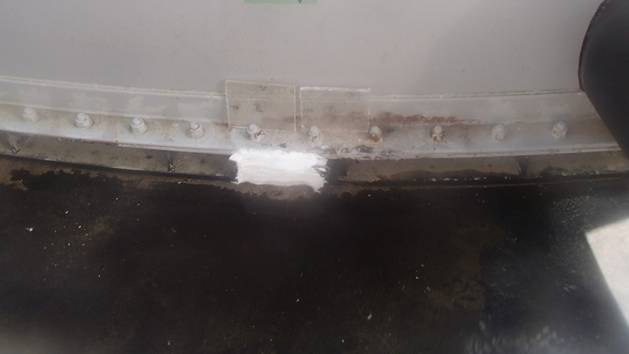
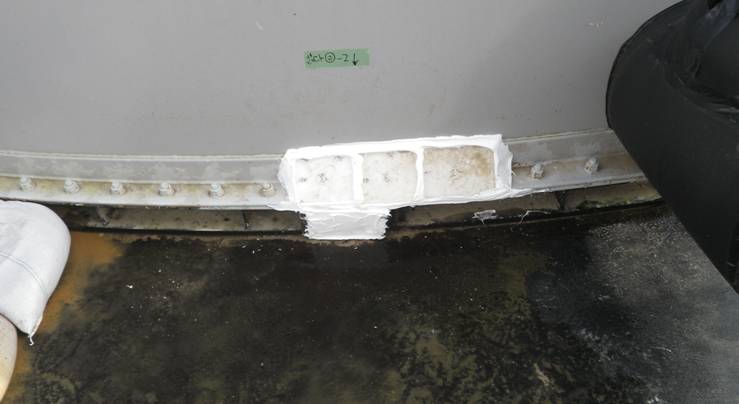
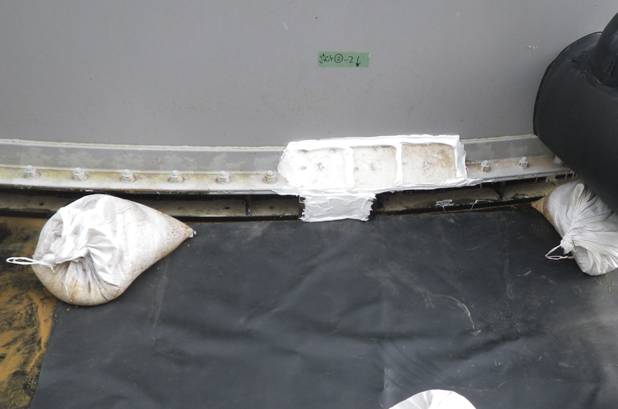

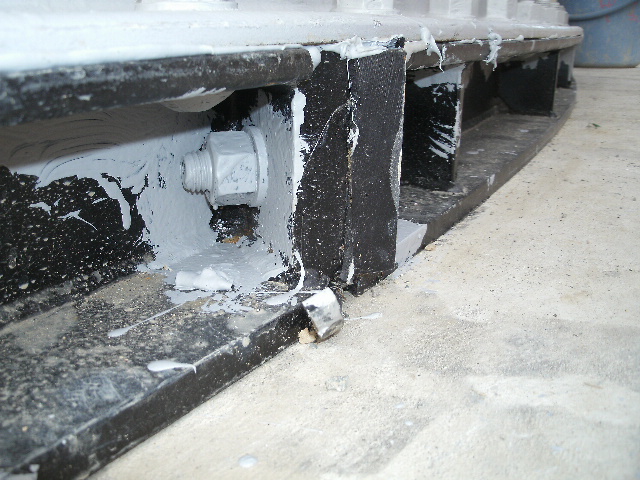
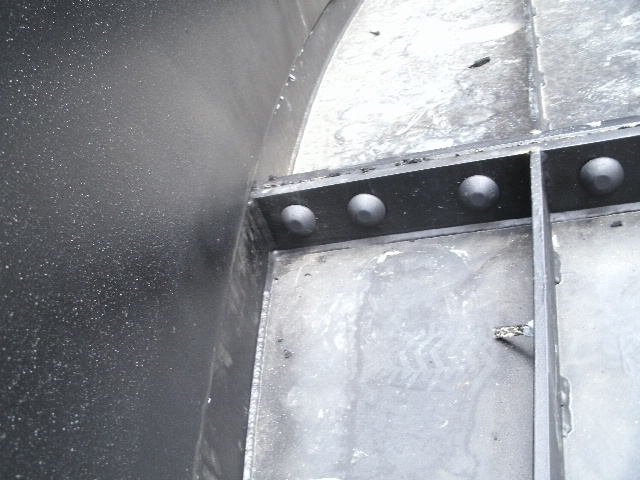
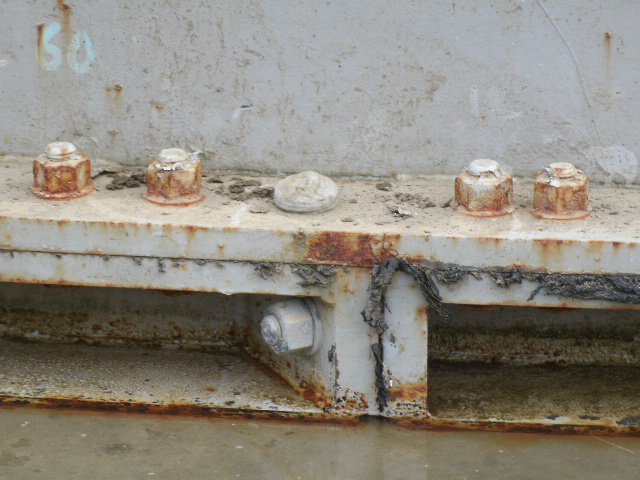



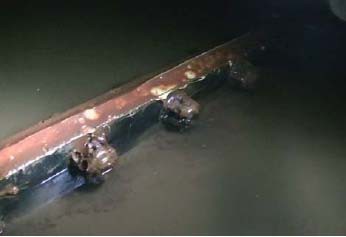

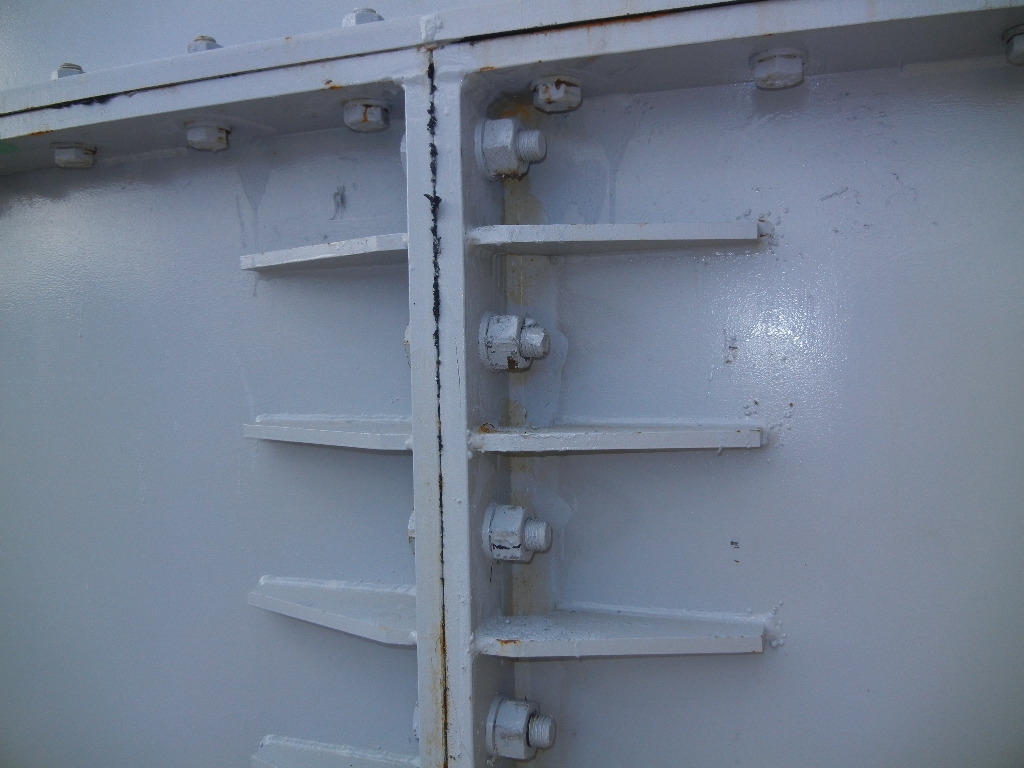
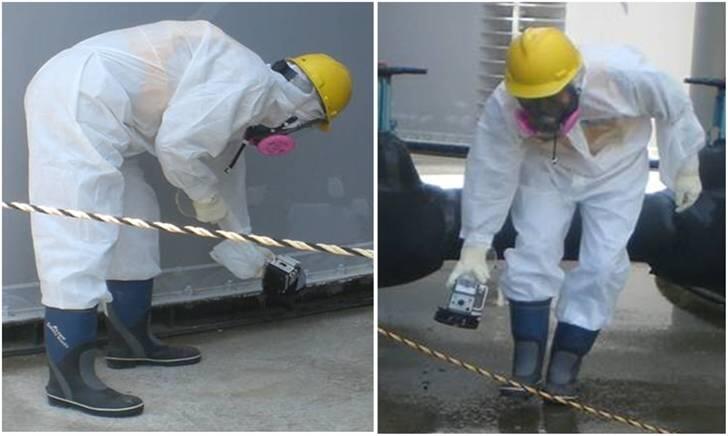

 Tokyo Time
Tokyo Time
![[Most Recent Quotes from www.kitco.com]](http://www.kitconet.com/charts/metals/gold/t24_au_en_usoz_2.gif)

